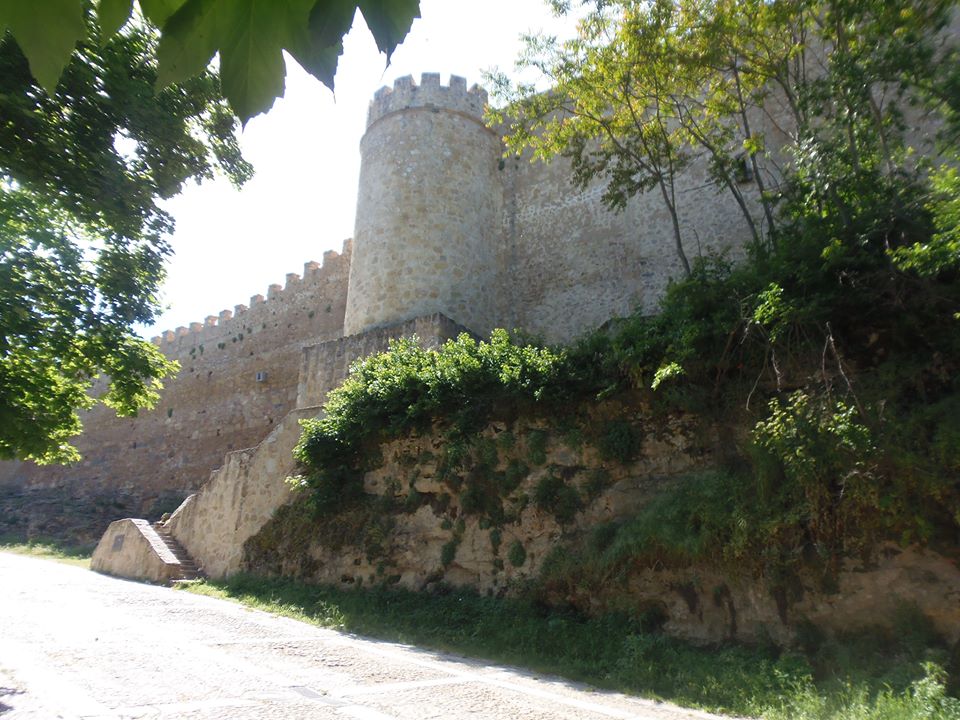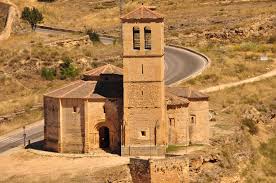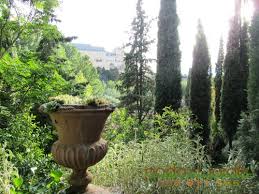CITY WALL NORTH
Segovia is situated on the confluence of the Clamores and Eresma Rivers, on a promontory which, in itself, allowed for easy defence, a factor which the first Neolithic settlers took advantage of. Later, the fortified settlement where the Alcázar [Fortress] currently stands was occupied by different pre-Roman tribes, principally Celtiberians.
Following the crisis of the Roman Empire in the 2nd Century, the Romans embarked on a process of enclosing their imperial possessions with walls which very probably was the origin of the first layout of the Wall.
The Christian reconquest of Segovia was carried out by Alfonso VI in 1088. This mission involved the reinforcement of the city's defences, for which a fence was raised with a form of a layout which was very similar to that which can be seen today.
The loss of the defensive value of the Wall during the 16th Century had an influence on planning in the city; dwellings were built attached to or upon the wall. From the 17th Century, the toll gates were abandoned. The Wall lost, therefore, its defensive, symbolic and territorial value.
During the 19th century, the wall came to be considered an obstacle to town planning and its demolition served, in some cases, as a pretext to reduce unemployment in the building sector.
The 20th Century brought a change in mentality and with it, the need to appreciate and conserve the wall became patent. Continuous restoration work and conservation work began at this time which continues to this day.
In 1941, the old part of the town within the Wall was listed. Finally, the walled area and the Aqueducto [Aqueduct] were declared a World Heritage Site by UNESCO.

- Francisco Peralta´s Puppetry Collection
Puppet Collection Francisco Peralta is located inside the Puerta de Santiago , just a few minutes walk from the Royal Mint and Alcazar .
This is one of the city gates that gave access to the walled enclosure , whose purpose was not only defensive but also had a tax collection and judicial.
The museum contains a wonderful collection Puppet puppeteer Francisco Peralta. The exhibition is designed to give all the attention to these little gems . made of wood , bandages , plaster and rabbit skin glue , recycled materials, fabric and metal elements . The puppets represent characters in plays taken from popular ballads and also show different handling systems : wires , gears and joints , machinery , rods, handles or pedestals .
Puerta de Santiago.
C/ Puerta de Santiago, 36
Tel. 921 46 05 01
titeres@turismodesegovia.com
titeres.turismodesegovia.com
This area of Segovia treasures a large concentration of monuments framed interest in an area of outstanding natural beauty . The visit to the Royal Mint can be supplemented by visiting this area , one of the lesser known treasures of the city.
ERESMA'S VALLEY
Monastery commissioned by Henry IV in 1447, although the legend attributes the foundation of the same to his favorite Juan Pacheco, Marquis of Villena. It is a complex of buildings arranged around several Gothic, Mudejar and Plateresque cloisters.
Abandoned after the Confiscation of 1836 and looted, its reconstruction took place after being declared a National Monument in 1914 and be again occupied by monks of the Order Jerónima 1927.
On the facade of the monastic, unfinished church, highlights the shields of the Pacheco and a graceful tower topped with Plateresque cresting, by the Segovian Juan Campero; Inside, with a ship, stand at the foot, side chapels and polygonal head, follows the model of Hieronymite constructions and was designed by the architect Juan Guas, the greatest exponent of Elizabethan Gothic.
Among the exceptional works of art of this temple include the cover of the sacristy, the tomb of Beatriz Pacheco and the Apostolate framing the high windows of the head, the sculptor Sebastián de Almonacid; and Plateresque set formed by the central altarpiece carved in wood, and the monumental sculptures of Juan Pacheco and his wife, Maria de Portocarrero, the work of the sculptors Juan Rodriguez and Lucas Giraldo.
Parral Monastery
C/ El Parral s/n
Tel. (+34) 921 43 12 98
www3.planalfa.es/msmparral/parral
E-mail: oshsmparral@planalfa.es

Zamarramala way is the Church of Vera Cruz, founded by the Knights of the Order of the Holy Sepulchre in 1208, although the popular tradition comes from time immemorial, attributing to the Templars.
The church, dodecagonal plant, has a very sober and exciting interior, with a mysterious halo. It has two floors with vault Muslim style, and remains of wall paintings.
Iglesia de la Vera Cruz
Ctra. De Zamarramala s/n
Tel. (+34) 921 431 475

Located near the Sanctuary of the Virgin of Fuencisla and next to the church of Vera Cruz , the convent is a good example of architecture XVII.Monasterio century of Discalced Carmelites.
A stone staircase, as an ascent of Mount Carmel takes us into the convent, founded by John of the Cross in 1586, on an earlier, Trinitarios community, settled in 1206. The mystic poet's house ruled 1587 1591 more friend to walk the path, carved in the rock, leading to the high of the Grajeras Peñas, where a small chapel dedicated to Santa Teresa, spiritual refuge of the saint is. the skeleton of cypress planted by him still stands there.
The remains of San Juan rest in a luxurious tomb which is no reflection of his simple life, but his great work; built by Felix Granada in 1927 as a tribute to the two hundred years of his canonization.
Leaving this chapel will find on the left the simple church in its main altar has a modern and gigantic altarpiece composed of nine paintings inspired by the poetry of John of the Cross and performed by the Mexican Carmelita Gerardo López Bonilla occasion the visit made John Paul II in 1982.
Monasterio de los Carmelitas Descalzos
Pº De Segundo Rincón 2
Tel. (+34) 921 431 349 / 921 431 961

- Virgin of Fuencisla Sanctuary
Sanctuary dedicated to the patron saint of the Community of City and Earth of Segovia. Built between 1598 and 1613 by Francisco de Mora to the Renaissance expansion of the early medieval hermitage existing there have been small. It has an altarpiece by Pedro de la Torre on the altar as well as a notable baroque grille closing the presbytery and donated by the guild of drapers.
Santuario Ntra. Sra. La Fuencisla
Pº de Segundo Rincón, s/n
Tel. (+34) 921 433 185
www.cofradiavirgendelafuencisla.com
 Garden created by the landscape architect Leandro Silva Delgado Uruguay , orchards near the Eresma river. Formed by more than three hundred species worldwide. The visit to Romeral to discover a work of art that reflects the soul and personality of its author. It is a perfect example of contemporary landscaping, and from it you can enjoy a unique and particular view of San Marcos and Alcázar.
Romeral de San Marcos, jardín de Leandro Silva
C/ Marqués de Villena, 17
Tel. 921 46 10 77 – 655 131 446
Garden created by the landscape architect Leandro Silva Delgado Uruguay , orchards near the Eresma river. Formed by more than three hundred species worldwide. The visit to Romeral to discover a work of art that reflects the soul and personality of its author. It is a perfect example of contemporary landscaping, and from it you can enjoy a unique and particular view of San Marcos and Alcázar.
Romeral de San Marcos, jardín de Leandro Silva
C/ Marqués de Villena, 17
Tel. 921 46 10 77 – 655 131 446
 PATH OF MILLS
PATH OF MILLS
This route is a pleasant walk that runs along the banks of the Eresma River from the San Lorenzo to San Marcos, through the Mint. The tour allows you to discover not only the landscape value of this area but also hydraulic and industrial heritage of the city. Along the route the visitor will find old factories like Loza, Flours and Borra, and the Molinos de la Hoya, Kabyle and Portalejo, testimonies of intense industrial past of this area of the city.

The building, located in the heart of San Lorenzo, in the late sixteenth century it was paper mill use, which continued until the early twentieth century, where paper was manufactured of various kinds. In 1910 the family Riber, converts the paper industry in manufacturing linters , regenerated and mattresses founded " La Fabril Segoviana " and an ice factory which used water power of the river to move a small refrigerator compressor. In 1986 , the City buys the factory and its properties to make it home to the Municipal Workshop School, in operation since; It is an example of the concept of recycling, so in vogue today.
This former factory now houses 4 workshops of local artisans:
- Glass
- Stonework
- Restoration of artworks
- Telar
Centro municipal de formación y empleo
“ANTIGUA FÁBRICA DE BORRA”
Paseo Alameda del Parral, 1
40.003 SEGOVIA
Tfno. y fax: 921 43 33 63
e-mail: fabrica.borra@segovia.es
escuela.taller@segovia.es


 Zamarramala way is the Church of Vera Cruz, founded by the Knights of the Order of the Holy Sepulchre in 1208, although the popular tradition comes from time immemorial, attributing to the Templars.
Zamarramala way is the Church of Vera Cruz, founded by the Knights of the Order of the Holy Sepulchre in 1208, although the popular tradition comes from time immemorial, attributing to the Templars.
 Located near the Sanctuary of the Virgin of Fuencisla and next to the church of Vera Cruz , the convent is a good example of architecture XVII.Monasterio century of Discalced Carmelites.
Located near the Sanctuary of the Virgin of Fuencisla and next to the church of Vera Cruz , the convent is a good example of architecture XVII.Monasterio century of Discalced Carmelites.


 PATH OF MILLS
This route is a pleasant walk that runs along the banks of the Eresma River from the San Lorenzo to San Marcos, through the Mint. The tour allows you to discover not only the landscape value of this area but also hydraulic and industrial heritage of the city. Along the route the visitor will find old factories like Loza, Flours and Borra, and the Molinos de la Hoya, Kabyle and Portalejo, testimonies of intense industrial past of this area of the city.
PATH OF MILLS
This route is a pleasant walk that runs along the banks of the Eresma River from the San Lorenzo to San Marcos, through the Mint. The tour allows you to discover not only the landscape value of this area but also hydraulic and industrial heritage of the city. Along the route the visitor will find old factories like Loza, Flours and Borra, and the Molinos de la Hoya, Kabyle and Portalejo, testimonies of intense industrial past of this area of the city.


